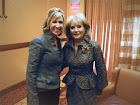October is Fire Safety Month. Fires and burns are the third leading cause of home injury and result in more than 3,400 deaths each year.
The non-profit Home Safety Council says only 37 percent of Americans have taken any steps to protect themselves against fires. Only 13 percent of people polled said they have planned and practiced a family fire drill. I know we haven't.. I do need to go over this with my son.
The Home Safety Council says only 51 percent of people surveyed had smoke alarms in their bedrooms. We do have smoke alarms in all of our bedrooms, but have not installed the Carbon Monoxide Detectors yet!! We will be doing that this week. Yikes!
“With less than three minutes to escape if a fire occurs, every home needs a well-rehearsed escape plan and working smoke alarms. They are critical to saving lives,” said Meri-K Appy, president of the Home Safety Council.
Installing and Testing Smoke Alarms:
· Only purchase smoke alarms that are listed by a national testing laboratory, such as UL or ETL; look for the listing mark on packaging.
· Install smoke alarms on every level of your home, including the basement. At the least, make sure there is an alarm near every sleeping area.
· HSC recommends installing additional smoke alarms inside all bedrooms.
· For the best detection and notification protection, install both ionization- and photoelectric-type smoke alarms throughout. Some models provide dual coverage.
· Smoke rises, so smoke alarms should be mounted high on walls or ceilings.
· Choose an installation location that is well away from the path of steam from bathrooms and cooking vapors from the kitchen, which can result in nuisance alarms. Don't install smoke alarms near windows, doors, or ducts where drafts might interfere with their operation.
· Test each smoke alarm every month. Push the test button until you hear the alarm.
· Put new batteries in your smoke alarms at least one time each year, and any time the alarm signals low battery power (typically a chirping noise).
· HSC recommends using interconnected smoke alarms. These alarms are available with wireless connection and hard-wired with battery back-up. Interconnected alarms are linked together so that if one alarm detects a fire, they all signal together.
· If your smoke alarms are 8-10 years old, get new smoke alarms.
Plan and Practice a Family Fire Drill:
· Make a fire escape plan with every member of your family. Sketch out a map of your home, including all rooms, windows, interior and exterior doors, stairways, fire escapes and smoke alarms.
· Make sure windows and doorways open easily and unlock easily from the inside, without a key. Make sure stairs and doorways are never blocked. Look for these and other things that could slow down your escape.
· If you have security bars on doors and windows, have a “quick-release” latch on the inside. Make sure everyone in your family knows how to use the latch.
· Find two ways out of every room – the door and maybe the window. You might need an escape ladder to get out of upstairs windows. If so, they should be part of your fire drill. Select two escape routes from each room and mark them clearly on the plan.
· Children and many older adults will need help escaping a fire. Plan for this. Know who needs help and pick an able family member to help them. If anyone in the household has a hearing impairment, purchase special smoke alarms that use strobes and/or vibrations to signal a fire.
· As a family, agree on a place to meet in front of your home. Use a portable phone or a neighbor’s phone to call 911 in a fire emergency. Once you get out, don’t go back inside for anything.
· Make copies of the escape plan sketch and post them in each room until everyone becomes familiar with them.
· Practice makes perfect. Hold family fire drills frequently and at various times until the escape plans become second nature. Once you’ve mastered the escape process, hold a drill when family members are sleeping so you can test each family member’s ability to waken and respond to the smoke alarm.
Do you know anyone who has been in a fire in their home? How did it happen? Any tips for us?
-NewsAnchorMom Jen
Methodist Medical Center's new online healthcare program, MyMethodist eHealth, is a proud sponsor of this blog post. MyMethodist eHealth is the secure link to your doctor's office that lets you request appointments, order prescription refills, update your personal health record, and more. Sign up for MyMethodist eHealth here.




.jpg)














1 comments:
I know several families that have been victims of a home fire. In fact I wrote a short case study with some eye-opening photos of a fire that completely burned the Jungels family home of 4200 sq.ft. Your readers may find this story and the photos of interest. The URL is http://www.residentialfiresprinklers.com/blog/home-fire-loss-jungels-family-case-study/
Fire safety in the home is worthy of some time and attention. Thanks for your article to help raise awareness on this important issue.
Post a Comment